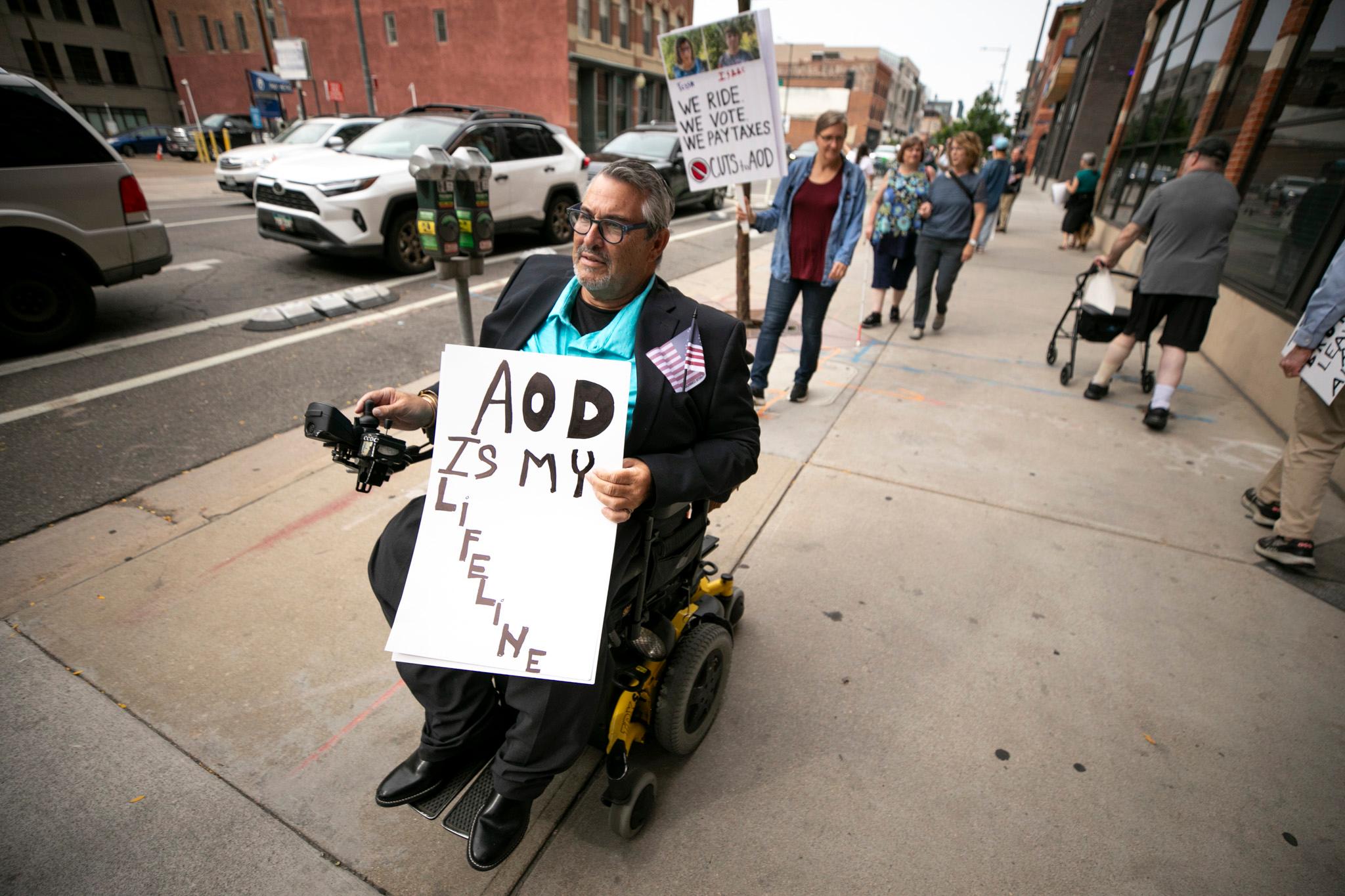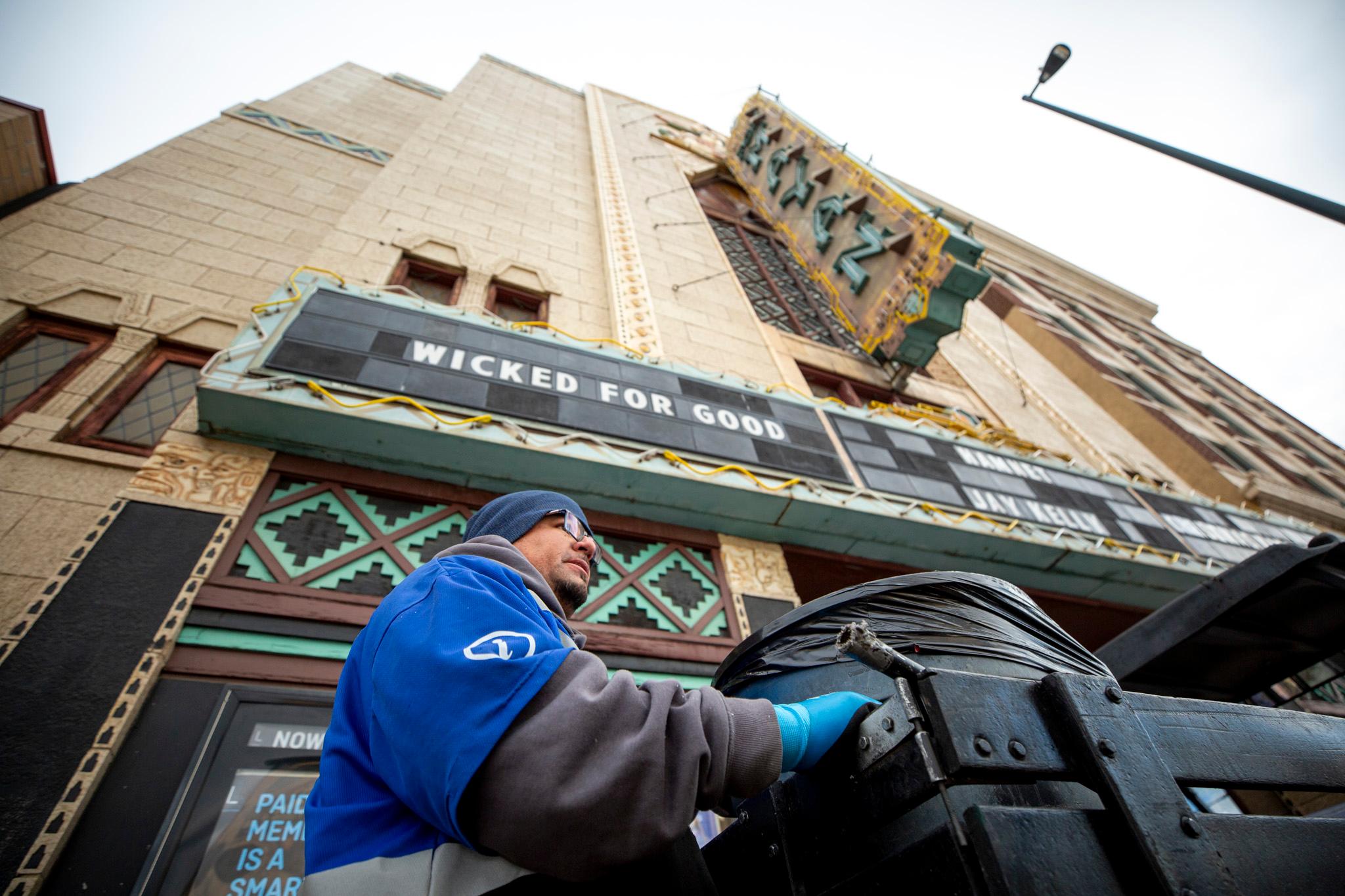It didn’t take long for Cristi Knudsen to get tired of her generator.
She and her husband, Don, opened their The Rush Coffee food truck franchise last July. They relied on the gas-powered dynamo to power a very fancy French espresso machine and some other gear during their first six months in operation.
“The vibrating, the noise, the pollution,” she lamented. “It's not like nice white noise.”
It shook the entire truck, and she worried about the fumes wafting around her.

So the couple jumped at the chance to upgrade when opportunity presented itself. They’d gotten in touch with Colorado’s Regional Air Quality Council (RAQC), which was offering money to “transition mobile kitchens” — that means food trucks — like theirs to all-electric systems.
“We are environmentally friendly people, so when the battery operation came about, we're like, ‘Oh yeah, we need to do that,’” she remembered.
That program is part of a larger effort to remove polluting gas engines from the Front Range, to address immediate health impacts and to steer the region out of long-standing violations with federal ozone rules.

RAQC spokesperson David Sabados said food truck generators do contribute significant air pollution to the region’s portfolio, but the focus on these businesses accomplishes something else: their popularity makes them a good way to spread the word about the council’s broader goals.
RAQC’s “Engines Off for Food Trucks” program has outfitted about 30 businesses with cleaner, quieter power sources since the program launched last year. It’s offering grants up to $20,000, and the council has funding to subsidize 90 more conversions. Applications are open.
This program may not make a huge impact on the city’s emissions, but that’s only part of the point.
One gas-powered food truck operation, running for eight hours, emits the same amount of carbon dioxide as burning 83 pounds of coal, Sabados said.
Here’s some very back-of-the-envelope math on that: If that’s true, and we guess that food trucks operate closer to four hours in a given day, Denver’s 700 licensed food trucks can burn the equivalent of 29,000 pounds of coal on one good shift. That’s only about .001% of the amount of coal a power plant can burn through in one day.
But Sabados said it’s important that all sorts of Front Range residents chip away at our collective airborne footprint, even if this program can only offer a relatively small reduction. The food truck program is part of a suite of measures meant to get at consumer-level pollution that can be harder to legislate away.

“Often at the RAQ, we do these programs that show the proof of concept, and then they get expanded,” he told us. “We were some of the first folks to be putting in a lot of EV charging stations, and then the state took it over and expanded it wildly. A lot of other electrification efforts have been similar. And this is another one where we're showing that this works, there is a meaningful impact and then we want to see this expanded out more broadly.”
Denver’s office of Climate Action, Sustainability and Resiliency has also been trying to electrify the city, offering rebates on next-gen lawn mowers, heat pumps and more to reduce gas emissions.
Reductions may be small on a macro scale, but benefits are bigger on the ground.
Comparing generator pollution to a coal plant is silly in a couple of ways. A big reason is that a hypothetical coal plant might emit pollution far away from homes.
Generators, on the other hand, are considered particularly problematic because they often run closer to where people are. That’s true for a food truck operation, where a generator is usually parked just outside the truck.
Cristi Knudsen, and others we met at an electric food truck demonstration on Tuesday, said she was glad to remove the loud, smelly unit from her setup.

But there’s also a financial impact that business owners said made the RAQC’s program attractive. Jigo Tiger, who’s run the Amore Pizza truck with his brother for the last decade, said he expects to save $10,000 a year on fuel he no longer needs to buy to run his operation.
“I don't miss the noise at all,” he said. “It is very nice. I love it.”
It’s still early days, and not everyone is ready to make the shift.
Eric Raya Steinbeiss, the director of activation for the Civic Center Conservancy, organizes the group’s regular Civic Center Eats food truck meetup in the park.
He’s said he’s been pushing his vendors towards the RAQC’s grant program, but Steinbess isn’t ready to fully ban generators from the event.
“We promoted this, we encouraged all of them,” he said, “However, requiring it for this year was not something that we could do, because there's so many costs that go into being a vendor and startup costs for any food business.”
Many of his vendors are women- and minority-owned businesses, working in a field notorious for razor-thin profit margins. He said putting their finances at risk to make an environmental impact, for now, feels like too big a risk.
But Raya Steinbeiss said he also knows customers coming to events at Civic Center Park appreciate the quieter, exhaust-free environment that electric power sources enable.
For now, he’s telling potential vendors they have a better shot at participating in Civic Center Eats if they have made the switch.














